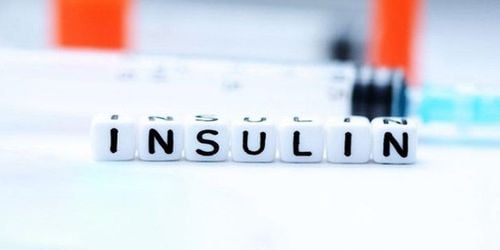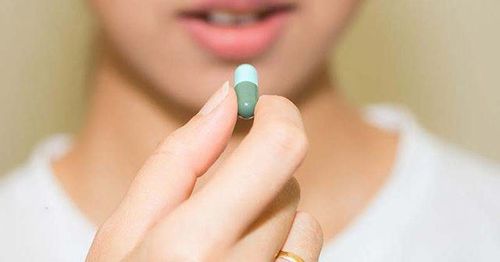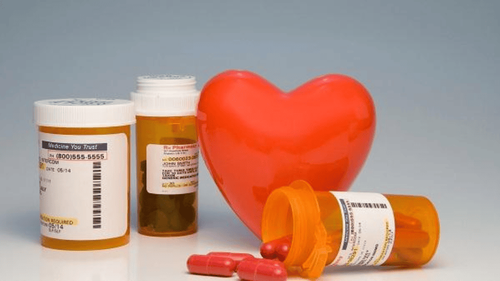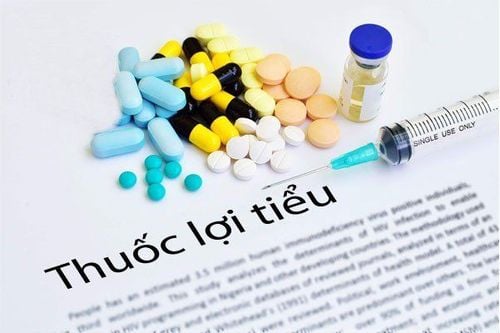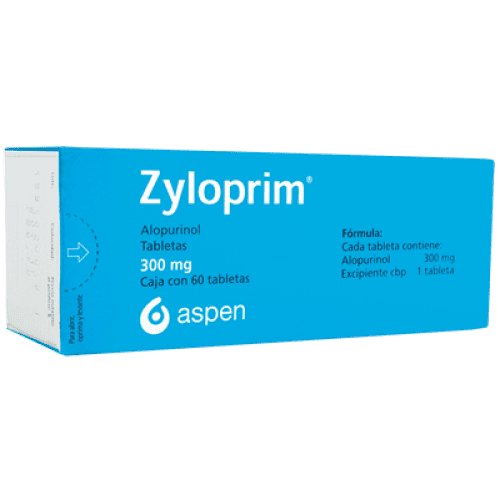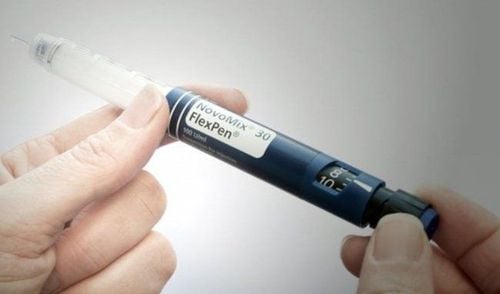This is an automatically translated article.
Chlorthalidone belongs to the group of diuretics made in the form of tablets and is indicated for use in cases of hypertension, chronic heart failure,... However, in some cases the drug can cause unwanted side effects such as hyponatremia, hypokalemia,... This article will provide more information about the use and use of Chlorthalidone in treatment to achieve its effectiveness.1. Pharmacokinetics and pharmacodynamics of Chlorthalidone
What is chlorthalidone? Chlorthalidone is a diuretic related to the benzothiadiazine component with a long duration of action. The main action of chlorthalidone is on the distal renal tubules with actions that inhibit sodium chloride reabsorption by antagonizing sodium and chloride transporters and promoting Ca reabsorption. Na. Along with that, water is also enhanced to the collecting duct leading to increased excretion and excretion of potassium and H ions. During the use of Chlorthalidone, the unit of blood pressure may increase slightly to moderate but still respond. is good in elderly patients, and reduces cerebrovascular, cardiovascular and total morbidity and mortality from cardiovascular-related diseases.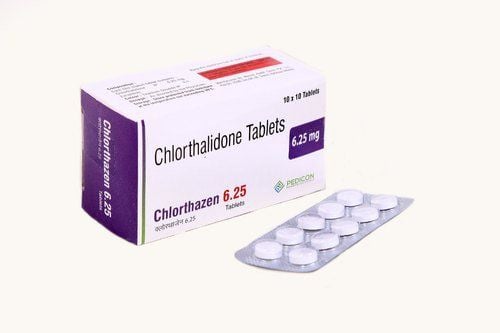
Thuốc Chlorthalidone được chỉ định điều trị tăng huyết áp
Chlorthalidone has a bioavailability of up to 64%, and the drug concentration peaks when taken into the body after 8 to 12 hours. When entering the body, the drug Chlorthalidone will be distributed mainly with plasma protein bindings accounting for about 76%, especially albumin and the drug has the ability to cross the placental barrier as well as breast milk.
Metabolism and excretion of the drug Chlorthalidone is carried out by the liver and enters the bile. Over a 120-hour period, approximately 70% of the administered dose is excreted in the urine and faeces, largely unchanged. Chlorthalidone is also eliminated by the kidneys, with a mean half-life of about 50 hours and will not change with prolonged use.
2. Dosage and how to use Chlorthalidone
Chlorthalidone is indicated for the treatment of hypertension or for the treatment of mild to moderate chronic heart failure according to the American Heart Association class II and III (NYHA II and III). . Or edematous conditions due to congestive heart failure, cirrhosis of the liver, nephrotic syndrome, acute glomerulonephritis or chronic renal failure. Or cases of ascites due to cirrhosis in patients can be tightly controlled. Or used in the prevention of calcium stones in the kidney.Chlorthalidone is available in the form of tablets with strengths of 12.5 mg and 50 mg. The drug is taken orally and should be taken with food.
For adults, the dose of Chlorthalidone used in the following cases: Treatment of hypertension: The starting dose is 25mg/day and can be increased up to 50mg/day. The maximum possible dose for the treatment of hypertension may be up to 100 mg orally once a day Treatment of stable or chronic heart failure in NYHA class II and III: Initial dose of 25 mg to 50 mg / day. In severe heart failure the dose can be increased to 100mg to 200mg/day. In addition, the patient may be prescribed a maintenance dose of 25mg to 50mg per day or every other day. Treatment of edema with definite cause: Initial treatment dose is from 50mg to 100mg. day. However, in some cases the doctor may prescribe a starting dose of 100mg but every other day or 3 times a week. Maintenance dose may be reduced to a lower level after a few days. The maximum dose of Chlorthalidone is 200mg a day. For children: The lowest dose of Chlorthalidone has been effective in treatment. For example, an initial therapeutic dose of 0.5mg to 1mg/kg body weight can be used in 48 hours and the maximum dose for children is about 1.7mg/kg/48 hours. Management of missed dose and overdose
If the patient forgets a dose, it can be taken as soon as possible when remembering. However, if the missed dose is close to the next dose, you can skip the missed dose and take the next dose at the correct time for the next dose. Patients should not take a double dose.
If a patient overdoses on Chlorthalidone, some effects may occur with signs such as dizziness, nausea, drowsiness, hypovolemia or hypotension or electrolyte disturbances related to the disorder. heart and muscle contractions. In case of overdose, there is no antidote that can perform gastric lavage, induce vomiting or use activated charcoal to reduce absorption. At the same time, the patient needs to monitor blood pressure and fluid or electrolyte balance. And depending on the specific case, the doctor will prescribe appropriate adjustment measures.

Người bệnh sử dụng thuốc Chlorthalidone có thể gây chóng mặt
3. Unwanted side effects when using Chlorthalidone and some notes
Although the drug Chlorthalidone brings many benefits in treatment, there are some contraindications to the treatment of Chlorthalidone such as hypersensitivity to the components of the drug or any of its components. Or cases of severe liver or kidney failure with creatinine clearance less than 30ml/min, persistent hypokalemia, symptomatic hyponatremia or hypercalcemia, hyperuricemia with history of gout, hypertension in pregnancy.Chlorthalidone drug, although it brings many benefits in treatment, but with some contraindications when treating with Chlorthalidone, such as hypersensitivity to the drug's components or any of its ingredients. Or cases of severe liver or kidney failure with creatinine clearance less than 30ml/min, persistent hypokalemia, symptomatic hyponatremia or hypercalcemia, hyperuricemia with history of gout, hypertension in pregnancy.
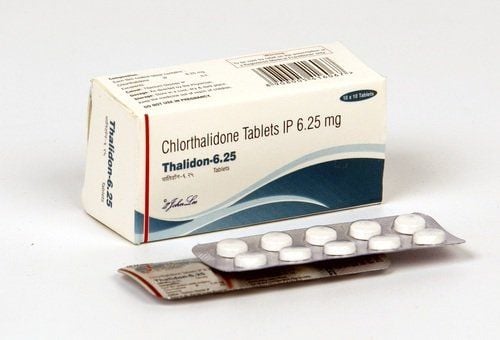
Thuốc Chlorthalidone gây hạ kali máu
Chlorthalidone drug interactions with diuretics increase the effect of curare derivatives and antihypertensive drugs. Chlorthalidone drugs have hypokalemic effects or are enhanced by corticosteroids, ACTH,... Used in combination with antidiabetic drugs but need to adjust the treatment dose. Concomitant use with non-steroidal anti-inflammatory drugs may reduce the diuretic and antihypertensive activity of chlorthalidone. The bioavailability of thiazide diuretics may be increased when used in combination with anticholinergics. However, the absorption of thiazide diuretics may be impaired when used in combination with anion exchangers such as cholestyramine. The combined use of Chlorthalidone may increase the effects of calcium salts and vitamin D. The results may be transient, but in some cases may persist with symptoms such as weakness, fatigue or anorexia in patients with hyperparathyroidism. Using concomitant treatment with Cyclosporin, chlorthalidone has the potential to increase the risk of hyperuricemia and complications causing gout. The combined use of chlorthalidone, chlorthalidone, and potassium salts should be avoided in patients being treated with ACE inhibitors due to the risk of excessive hyperkalemia. Drug interactions may alter the ability of Chlorthalidone to work or may also mimic unwanted side effects. Before using the drug, the patient should carefully read the drug information and consult the treating doctor. At the same time, you must follow the doctor's instructions to be effective.
Please dial HOTLINE for more information or register for an appointment HERE. Download MyVinmec app to make appointments faster and to manage your bookings easily.




